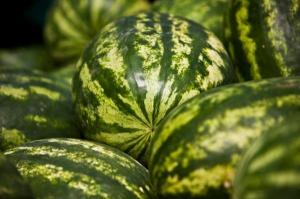The process of developing new crop varieties requires many steps and can take almost 25 years. Now, however, applications of agricultural biotechnology have considerably shortened the time it takes to bring them to market

The process of developing new crop varieties requires many steps and
can take almost 25 years. Now, however, applications of agricultural
biotechnology have considerably shortened the time it takes to bring
them to market. It currently takes 7-10 years for new crop varieties to be
developed. One of the tools, which make it easier and faster for scientists
to select plant traits is called marker-assisted selection (MAS).
The different traits and physical features of plants are encoded in
the plant’s genetic material, the deoxyribonucleic acid (DNA). The
DNA occurs in pairs of chromosomes (strands of genetic material),
one coming from each parent. The genes, which control the plant’s
characteristics, are specific segments of each chromosome. All of the
plant’s genes together make up its genome.
Some traits, like flower color, may be controlled by only one gene.
Other more complex characteristics, however, like crop yield or starch
content, maybe influenced by many genes. Traditionally, plant breeders
have selected plants based on their visible or measurable traits, called
the phenotype. But, this process can be difficult, slow, influenced by the
environment, and costly – not only in the development itself, but also for
the economy, as farmers suffer crop losses.
1213
As a shortcut, plant breeders now use molecular marker-assisted selection.
To help identify specific genes, scientists use what are called molecular
markers which are short strings or sequence of nucleic acid which makes up
a segment of DNA. The markers are located near the DNA sequence of the
desired gene. Since the markers and the genes are close together on the
same chromosome, they tend to stay together as each generation of plants
is produced. This is called genetic linkage. This linkage helps scientists to
predict whether a plant will have the desired gene. If researchers can find the
marker for the gene, it means the gene itself is present.
As scientists learn where each of the markers occurs on a chromosome, and
how close it is to a specific gene, they can create a map of the markers and
genes on specific chromosomes. This genetic linkage map shows the location
of markers and genes, and their distance from other known genes. Scientists
can produce detailed maps in only one generation of plant breeding.
Previously, scientists produced very simple genetic maps using conventional
techniques. It was observed long ago that as generations of plants were
crossed, some traits consistently appeared together in the new generations
(genetic linkage). However, since researchers could concentrate on only a
few traits in each attempt at cross-breeding, it took many crosses to obtain
even a very simple genetic map. Using very detailed genetic maps and
better knowledge of the molecular structure of a plant’s DNA, researchers
can analyze a tiny bit of tissue from a newly germinated seedling. They don’t
have to wait for the seedling to grow into a mature plant to test for the
presence of the specific trait. Once the tissue is analyzed through molecular
techniques, scientists know whether that seedling contains the appropriate
gene. If it doesn’t, they can quickly move on and concentrate analysis on
another seedling, eventually working only with the plants which contain the
specific trait.
Currently, molecular marker-assisted breeding, an agricultural biotechnology
tool is already a routine step in breeding of most crops where the gene and
the markers for a specific trait are known. This technique is being used in the
efficient introgression of important genes into rice such as bacterial blight
resistance, increased beta carotene content, and submergence tolerance to
name a few.
Molecular markers are also used to determine the genetic profile of a line
or variety. Random primers are used to scan the genomic constitution
of the plant through molecular methods. The information is fed to a
computer program that will analyze the relatedness of one line to another.
The information on genetic diversity of the lines is utilized in selecting
for extremely unrelated parents useful for hybrid seed technology. The
information will also provide details on the parentage of the line, the possible
traits, and the unique identity of the plant useful for germplasm collection
database.14
Figure 5. Molecular marker-assisted breeding
Source: Alfonso, A. 2007
It should be noted, however, that molecular breeding through marker
assisted selection is somewhat limited in scope compared to genetic
engineering or modification because: 1) it only works for traits already
present in a crop; 2) it cannot be used effectively to breed crops which
have long generation time (e.g. citrus); and 3) it cannot be used effectively
with crops which are clonally propagated because they are sterile or their
offsprings does not resemble the parents. This includes many staples such as
yams, bananas, plantain, sweet potato, and cassava.
According to isaaa